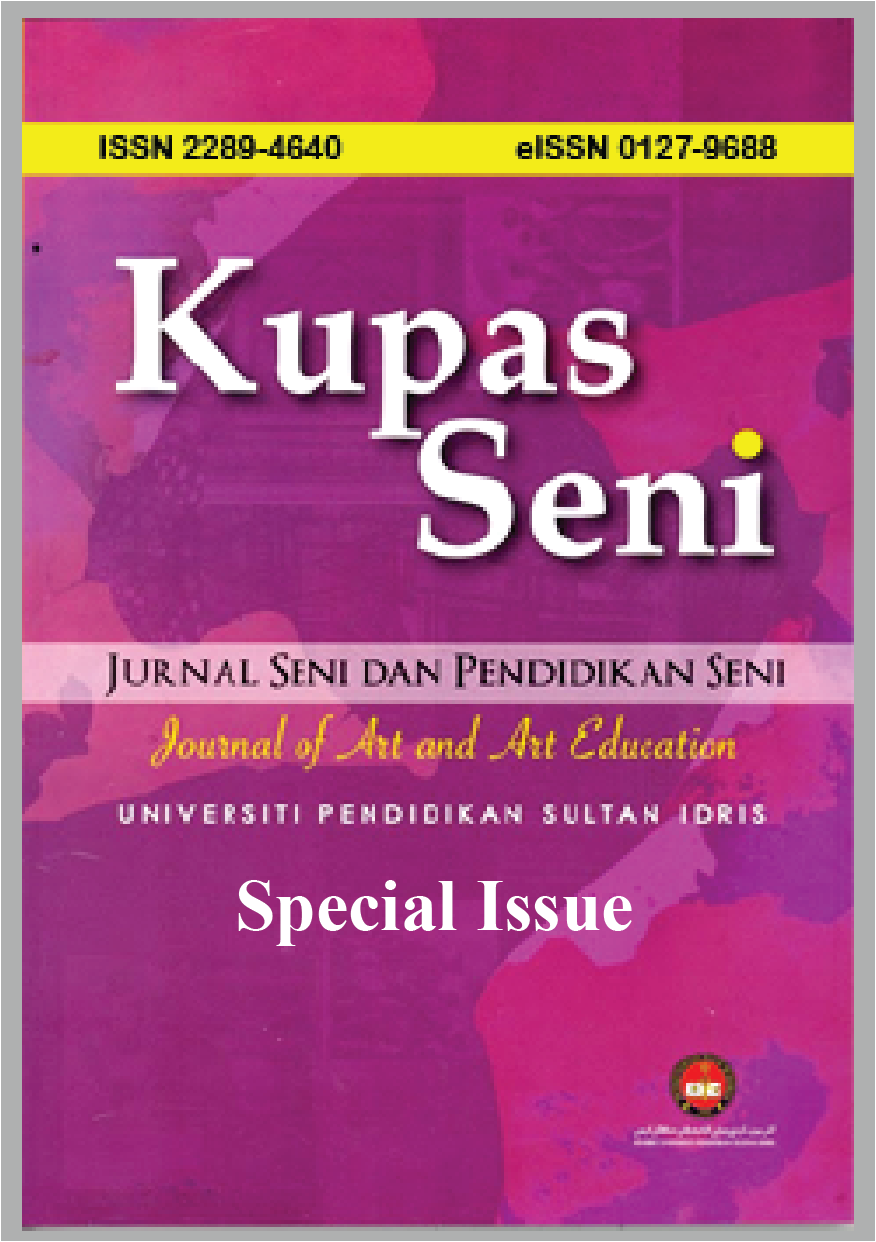Effective Measurement for the Production of ‘Piece Mould’ in Metal Casting Sculpture Course, Diploma in Fine Art: An Experimental Study for Teaching and Learning
DOI:
https://doi.org/10.37134/kupasseni.vol10.sp.2.1.2022Keywords:
Sculpture, effectiveness, piece mould, metal casting sculptureAbstract
The sculptural art of metal casting is an important course in the Diploma of Fine Arts. Personal experience had informed the author that the process for piece mould making taught in the course does not involve precise measurements of ratio between water and plaster of Paris (POP), and the conventional ‘Island Formula’ was used instead. This process produced inconsistent result with less durability. This paperwork aims to formulate the most effective measurement for the ratio of water and POP, for the purpose of piece mould making suitable for metal casting. Using the experimental methods found in the process of metal casting, the researcher had undergone 6 process of piece mould making using different measurement with 100ml of water as control. The 100ml of water is tested against a variable of 115g, 120 g, 125g, 130g, 135g, and 140g of POP. The result showed that the most effective measurement for a lost wax casting piece mould is the ratio of 100ml water to 125g POP. This ratio will prevent excessive use of POP or water, and thus could serve as an effective standard for educational purposes. Although the scope of this paper covers the exploration for effective mould making measurements, there were also suggestions to extend the research towards making investment moulds. Variables could not only be limited to material measurements, but also the type of mixed aggregates, and optimal firing time.
Downloads
References
Alo, L. (2021). Makna seni dan kesenian: seri pengantar studi kebudayaan. Indonesia: Nusamedia.
Agustine, N. (2019). Kepentingan pedagogi untuk guru. Penerbitan dalam talian. Doi: 10.13140/RG.2.2.22868.55686
Brian, A. H., Erlis, L., & Tiffani, W. (2020). Pedagogi metodologi desain sebagai strategi pendidikan desain (studi kasus: identifikasi metodologi simulasi perancangan ulang Website taman mini indonesia indah). Penerbitan dalan talian. Doi: 10.35886/nawalavisual.v2i2.107
Brian, A. H., Jessie, R. K. H., Karina, O. H., & Natasha, C. G. (2020). Evaluasi metodologi desain dalam simulasi perancangan ulang sistem tanda untuk pengguna transportasi umum. Penerbitan dalam talian. Doi: https://doi.org/10.31598
Claire, W. B. (2006). The sculpting techniques bible. New Jersey, USA: Chartwell Books.
Chris, F., & Roz, C. (2017). Longman dictionary of contemporary english, 6th edition for advanced learners. England : Pearson Education Limited.
Glynis, B. (1979). Casting techniques for sculpture. London: B. T. Batsford Limited.
Hilary, C. (2020). Creative research: the theory and practice of research for the creative industries. Switzerland: AVA Publishing SA.
Karen, H. (2005). Sculpting basic. Singapore: Page One Publishing Private Limited.
Kamus Dewan Edisi Keempat. (2017). Malaysia: Dewan Bahasa Dan Pustaka.
Laura, F. (2007). Craft and the visual arts : modern art – sculpture. Kuala Lumpur: Didier Millet.
Muliyadi, M. (2008) Susurmasa. Kuala Lumpur: Balai Seni Lukis Negara.
Norhayati, M., & Siti, S. B. (2016). Penguasaan media dan teknik penghasilan arca. Penang, Malaysia: Ferringhi Distributors.
Ong, S. C., Zambri & Mohd, I. (2017). Meneroka kaedah pengajaran guru cemerlang psv negeri sarawak: satu kajian kes. Jurnal pendidikan PSV Vol.7, Bil. 1.
Roslina, M. N., Nik, M. R., & Hamdzun, H. (2019). Pengetahuan pedagogi ilmu kandungan dalam kalangan guru seni visual sekolah menengah di Hulu Langat. Penerbitan dalan talian. Doi: http://dx.doi.org/10.17576/JPEN-2019-44.01SI-11
Rogers, L. R. (2020). Sculpture. Encyclopedia Britannica. Diperoleh semula daripada https://www.britannica.com/art/sculpture
Sri, N, H. (2020). Material teknik (logam, keramik, polimer, dan komposit). Diperoleh semula daripada https://www.academia.edu/43027957/MATERIAL_TEKNIK_Logam_Keramik_Polimer_dan_Komposit_
Siska, N. (2020). Apakah Seni Itu?. Yogyakarta: Basabasi.
Tuck, L. (1991). From clay to bronze: a studio guide to figurative sculpture, USA: Watson Guptilt Publications.
Vincent, F. B. (1997). Casting for sculpture. London: A & C Black.
Widi, P. S. (2021) Transformasi material kertas dalam penciptaan karya seni lukis. Institut Seni Indonesia Yogyakarta. Journal of contemporary Indonesia Art Vol. 7 No.1.
Downloads
Published
Issue
Section
License
Copyright (c) 2022 Wan Nurhasyimah W. Mohd Apandi, Ishak Ramli, Hairulnisak Merman, Hilal Mazlan, Rosmidahanim Razali

This work is licensed under a Creative Commons Attribution-NonCommercial-ShareAlike 4.0 International License.





